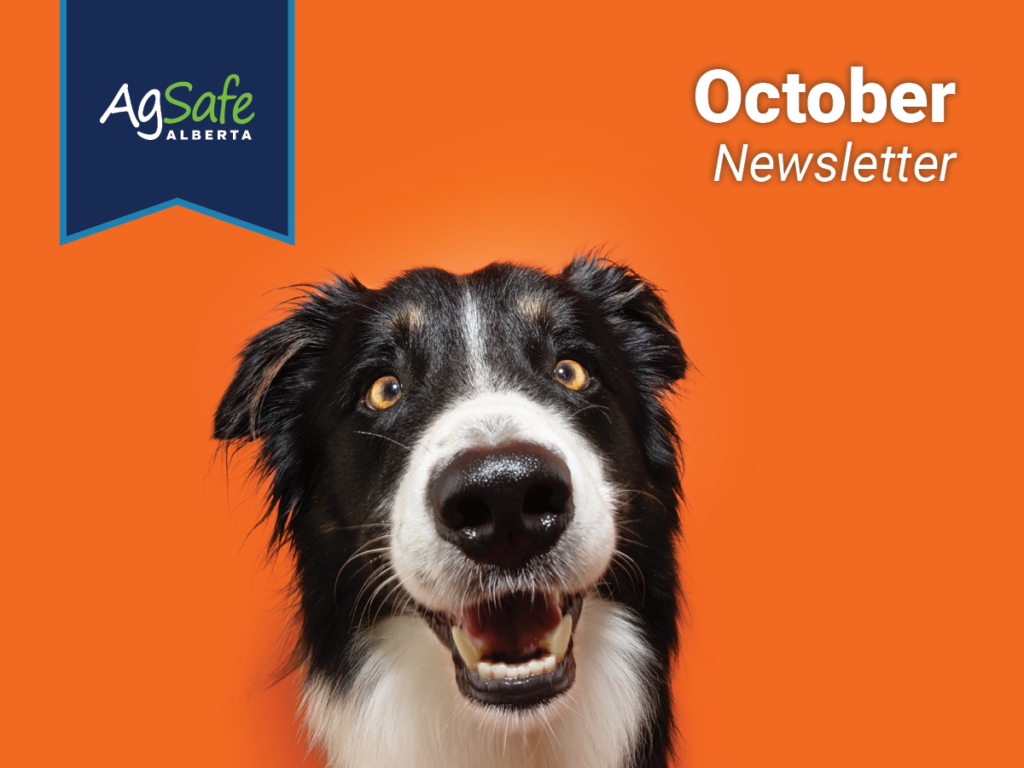
It Happened to One of Us
When it comes to talking about farm incidents and sharing stories, we need to be mindful never to blame, shame or criticize anyone. Incidents like the ones shared in this section not only happen across Alberta but across Canada and even around the world.
Farming is considered a high-risk industry, and these incidents could occur in any operation without the right hazard control measures in place. As you read these stories and even as you hear about an incident that occurred on the farm of someone you know, you should be:
- Thinking about jobs and tasks performed by your farm team members that are similar to the one that was being performed when the incident occurred.
- Determining whether or not you have performed hazard and risk assessments for these (and the other) jobs and tasks performed on your farm.
- Thinking about what hazard control measures you have in place to prevent a similar incident from happening on your operation and whether these hazard control measures have reduced the risk to a reasonable level.
- Remembering that common sense is a myth… that’s right, it does not exist! To quote Alan Quilley, CRSP, “Anyone who believes that they have common sense has simply forgotten who taught them what they know.”
AgSafe Alberta is continually creating tools, resources and learning opportunities to help you and the people working on your farm stay safe. If you have not recently, visit our website (agsafeab.ca) to see what is new and what you can use on your farm.
Don’t Work Yourself to the Bone This Harvest

Fatigue is a serious and common hazard on farms, especially during harvest. We make a point to talk about fatigue regularly and hope that you are doing the same with your family and the other members of your farm team. As you put in long, hard days on the farm while operating very large, noisy and potentially dangerous equipment, keep the following in mind:
- Long work hours increase the risk of fatigue.
- Fatigue is a state of impairment and should be thought of like alcohol impairment; remember, drowsy driving is impaired driving!
- Fatigue reduces your alertness, your concentration and your reaction time.
- Fatigue is associated with such health conditions as depression, obesity, cardiovascular disease and others.
- Missing small amounts of sleep will add up over time, leading to sleep deprivation.
- Missing large amounts of sleep over a short period of time will lead to sleep deprivation.
- Pushing yourself and others to exhaustion can result in a loss of equipment, or worse, a loss of life. While Mother Nature dictates much of the work schedule, we have all likely heard of someone who fell asleep at a wheel, hit or rolled a grain truck, ran the cutter where they shouldn’t have (leaving them without an important piece of equipment) and so on.
Why Caffeine Is Not a Good Fix For Fatigue

While caffeine might make you feel alert in the short term, it can contribute to fatigue in the long run by:
- Causing dehydration (a symptom of which is fatigue and headaches).
- Disrupting your circadian rhythm when consumed in the afternoon and evening, resulting in poor sleep and increasing fatigue.
- Interfering with the amount of sleep and the quality of sleep you get, increasing fatigue.
Some better ways to manage fatigue on the farm include:
- Prioritize rest, recovery and sleep as much as possible.
- Ensure everyone stays hydrated with enough drinking water.
- Do what you can to encourage everyone to eat a balanced diet. Not only is this healthier overall, but it can help prevent blood sugar spikes (from things like sweets and simple carbohydrates) that will contribute to fatigue.
- Ensure everyone on your farm knows how to recognize fatigue in themselves and others. Have a plan in place for how to address when someone is fatigued.
- Ensure people take enough breaks; this includes getting out of the equipment and moving around as much as possible.
Watch Waking Up to Fatigue Factors on the Farm, a webinar presented by Kimberly Hobbs of In-Scope Solutions as part of our 2022 Growing Farm Safety Webinar Series.
Fatigue, Extended Work Hours and Workplace Safety Bulletin by the Alberta Government
Find fatigue information and tools available from the National Safety Council
Are You Risk Blind?

Farming commonly involves high-risk work. One of the problems is that so many people living and working on farms have become blind to the risks they face every day. In an article titled “The Risk of Risk Blindness” published by Integrity Governance®, an organization that works with companies worldwide to better manage their businesses, six factors that contribute to risk blindness are identified:
- Recency: Greater energy and attention are often given to events that have happened recently, rather than on the probability of risk.
- Visibility: Humans tend to focus on the things that we can see over the things that we cannot see.
- Assumptions: Too many decisions are made because people make assumptions about risk.
- Too much or too little confidence: Too much confidence results in people ignoring certain risks, whereas too little confidence results in overestimating the impact of some risks.
- Skills: People simply do not know what they do not know; this results in not being aware of the risks that they are taking.
- Culture: You should be familiar with culture, particularly safety culture, at this point.
This is where what the farm considers to be acceptable risk-taking behaviour becomes clear (what is acceptable to do and what is not).
(Integrity Governance®, n.d.)
Learn more about identifying hazards and managing risk on your farm in the new AgSafe Alberta FarmSafe Plan Manual. This manual is a complete rewrite of the original; it reflects changes that have occurred in Alberta Occupational Health and Safety as it relates to farms and ranches and was written especially for producers.
Safety First, Last Thoughts
Do You Have Fire Safe Zones Around Your Farm?

After the wildfires experienced earlier in 2023, many farmers are continuing to take measures that will make them able to better withstand a wildfire. One of these measures is to create what are called “Fire Safe Zones.”
The Cooperative Extension of Colorado State University, in cooperation with the Colorado State Forest Service and U.S. Department of Agriculture, created a document to help those specifically in rural areas address the fire hazards on their property. You can review this document here: Creating Fire Safe Zones Around Your Forested Homesite – Service in Action
Fire Smart Canada and Partners in Protection have created several resources to help homeowners protect their properties as well as resources for communities. Links to some of these resources can be found below:
Home Ignition Zone Self-Assessment – FireSmart Canada
FireSmart Begins at Home Guide – FireSmart Canada
FireSmart Guide to Landscaping – FireSmart Canada
FireSmart Protecting Your Community from Wildfire – Partners in Protection
Wildfire-Resilience Best Practice Checklist for Home Construction, Renovation and Landscaping – FireSmart, et al.
Additional resources that may be helpful on your operation are listed below:
Barn Fire Safety Checklist by the National Fire Protection Association
Fire Prevention on Your Farm and Ranch – Nebraska Forest Service
Learn How to Protect Your Farm from Wildfire – Michigan State University MSU Extension
The burning of brush and debris can be a handy way to get your farm cleaned up before winter and reduce the wildfire risk in the spring, but there are many things that you should consider first.
- Brush and burning piles may appear to be extinguished when they are in fact smouldering and can reignite later on. You will want to keep checking on these areas and make certain they are fully extinguished and will not catch anyone by surprise later on.
- A basic consideration is whether or not what is being burned might be prohibited debris. Prohibited debris can include certain containers, baler twine, treated wood and plastic or rubber materials/coated materials. More detailed information can be found on the Government of Alberta Publication Prohibited Debris: Before You Burn…Learn!
- Fire season in Alberta starts March 1 and lasts until Oct. 31, though it may be extended if necessary. Fire permits are required while fire season is in effect and can be obtained for free through your local Alberta Environment and Parks office. Call 310-0000 to locate your nearest office and visit albertafirebans.ca to ensure there are no fire bans in effect for your area.
CONTACT US
For general inquiries: info@agasafeab.ca /403-219-
For our hotline for incidence assistance: 1-833-9AGSAFE
